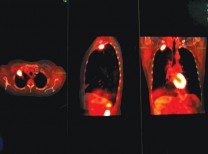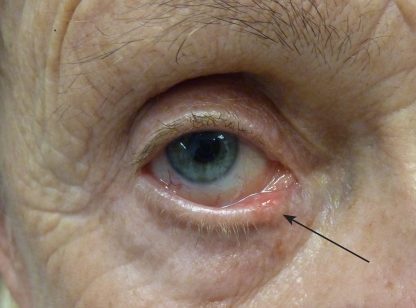Lung Cancer is the leading cause of death in both men and women in the United States and it is still on the rise. In 1964, the Surgeon General’s report concluded that tobacco smoke was a cause of lung cancer. Today, smoking is thought to cause up to 90 percent of lung cancers.
Currently, the 5 year survival rate for lung cancer is 15%, as compared to breast, colon and prostate cancer which have more favorable rates between 65 and 99%. Survival rates for lung cancer generally improve with early diagnosis. The 5 year survival rate for lung cancer approaches 50% if it is still localized at the time of detection. However, only 1 in 4 lung cancer cases are diagnosed early.
Historically, physicians relied mainly on chest x-rays to screen for lung cancer, but this exam does not show small lesions in the lung sufficiently. Computed tomography (CT) is a specialized x-ray based imaging test that can detect lung cancer when it is still very small and localized. In August 2011, the National Cancer Institute released results from its National Lung Screening Trial (NLST) which randomly screened at-risk smokers with either low dose CT or standard chest x-ray. The study found that the improved ability of low dose CT scans to identify and diagnose lung cancer could reduce mortality from lung cancer by 20% compared to chest x-rays.
These findings led the American Lung Association (ALA) to re-examine their current policy on lung cancer screening. In April 2012, the ALA published new interim guidelines to assist physicians, their patients and the public in their discussions about lung cancer screening. The new recommendations are:
- The best way to prevent lung cancer caused by tobacco use is to never start or to quit smoking
- Low-dose CT screening should be recommended for those people who meet NLST criteria:
- Current or former smokers, aged 55 to 74 years
- A smoking history of a pack a day for 30 years or 2 packs a day for 15 years
- No history of lung cancer
- Individuals should not receive a chest x-ray for lung cancer screening
- Low-dose CT screening should NOT be recommended for everyone
- ALA should develop public health materials describing the lung cancer screening process in order to assist patients in talking with their doctors. This educational portfolio should clarify:
- The difference between a screening process and a diagnostic test
- The benefits, risks and costs (emotional, physical and economic)
- That not all lung cancers will be detected through use of low dose CT scanning
Other recommendations made in the report include referring patients to facilities that have experience in conducting low dose CT scans and that employ multidisciplinary teams with comprehensive follow up care.
Early detection and treatment can make the difference in the successful treatment of lung cancer and long term survival. New minimally invasive techniques are available to diagnose and treat lung cancer if the cancer is found at an early stage. This is especially important for individuals who do not demonstrate any symptoms but have a higher risk of acquiring lung cancer than the general population.
Dr. Neumann is a Board Certified Radiologist with Desert Medical Imaging which performs the CT screening exam at all four of their locations in Indian Wells, Palm Springs, Indio and Yucca Valley. For more information call 760-694-9559.














































Comments (0)